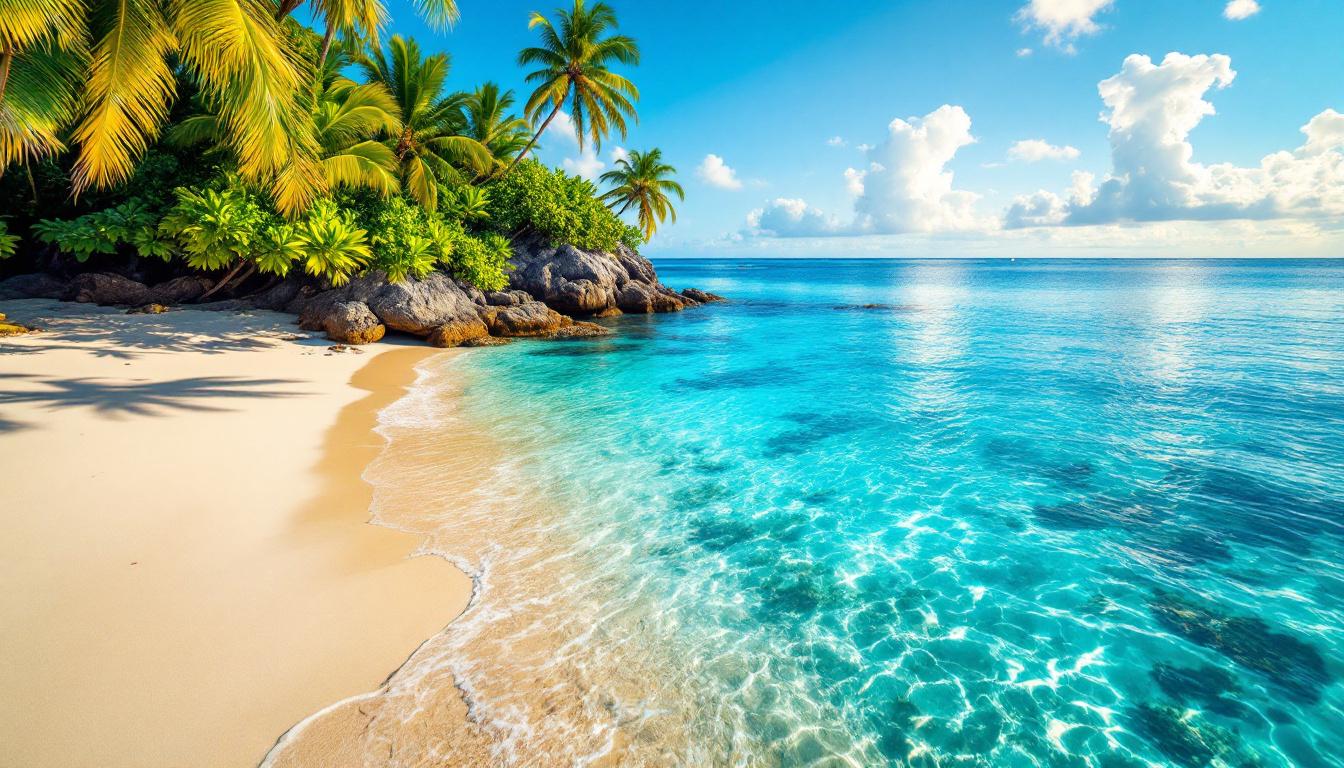The dusty 4×4 road ends abruptly at Honduras’ most protected secret. Paya Bay Beach allows only 30 visitors daily, a number locals fiercely defend to preserve what they call “the last peaceful place” on Roatan’s eastern tip.
While crowds surge through Belize’s barrier reef towns paying premium prices, this hidden stretch of Caribbean paradise offers the same pristine coral system for 60% less. The locals’ protective instincts have created something extraordinary: authentic Caribbean culture without the tourist circus.
After 25 years exploring hidden corners of the Caribbean, I’ve never encountered such deliberate exclusivity. The community didn’t stumble into this protection—they chose it, and the results speak louder than any marketing campaign ever could.
The access that keeps crowds away
The 4×4-only approach that locals prefer
The unpaved road to Paya Bay isn’t an oversight—it’s intentional. 60-90 minutes of bumpy terrain from Roatan’s cruise terminals ensures only committed travelers reach this sanctuary. Locals smile when describing how rental car companies warn tourists about the route, effectively pre-screening visitors who truly want to be here.
The reservation system that protects paradise
Day passes require advance booking, with exactly 30 spots available daily. The resort’s representatives coordinate every arrival, creating a buffer between mass tourism and local tranquility. This isn’t exclusivity for exclusivity’s sake—it’s cultural preservation disguised as hospitality.
The reef locals call their treasure
The same barrier reef as Belize without the crowds
The Mesoamerican Barrier Reef extends from Mexico through Belize to Honduras, but only locals here treat snorkeling as sacred rather than commercial. Wade 100 yards from shore into coral gardens that rival Belize’s famous Blue Hole region, yet encounter fewer than 30 people instead of hundreds.
The marine protection locals enforce themselves
While Belize’s reef areas struggle with overtourism damage, Paya Bay’s visitor limits naturally protect marine ecosystems. Local fishing families still use traditional bottle-line techniques, demonstrating generational reef stewardship that commercial dive operators rarely match.
The community secrets locals share carefully
The cultural protocols that create authentic connection
Unlike commercialized Caribbean destinations, interactions here follow local rhythms. Fishermen offer impromptu cultural exchanges rather than scripted performances, sharing techniques passed down through families. The naturist zones operate with community blessing, representing Honduras’ most progressive coastal culture.
The seasonal advantages locals appreciate most
July and August bring perfect dry weather while other Caribbean destinations face hurricane anxiety. Trade winds keep temperatures comfortable, and the protected eastern position shields the beach from afternoon storms that plague western Roatan resorts.
The authentic alternative locals are protecting
The cost comparison that locals quietly celebrate
Day passes cost significantly less than equivalent Belize reef experiences, while accommodation rates remain 60% below similar Caribbean exclusivity. Locals appreciate that affordability attracts travelers seeking connection rather than status, maintaining the community character they’re protecting.
The sustainable model that locals developed organically
The 30-visitor limit emerged from community discussions, not corporate planning. Roatan’s other beaches showcase what happens without such limits—development pressure and cultural dilution that locals watched with concern before implementing their protective measures.
Planning your respectful discovery
What locals want you to know before visiting
Advance reservations are mandatory, not suggested. Spa services require phone booking after confirmation, respecting the personal touch locals value. Central American travel protocols emphasize cultural sensitivity, and Paya Bay exemplifies these principles in practice.
What locals hope you’ll understand
The bumpy road isn’t an inconvenience—it’s a filter. The visitor limit isn’t exclusivity—it’s preservation. When locals cap visitors at 30 daily, they’re not limiting tourism, they’re protecting something precious for both their community and future travelers who understand the difference.
Your questions about Paya Bay’s protected status
How do locals enforce the 30-visitor daily limit?
The resort coordinates with community leaders to track arrivals, ensuring day passes never exceed capacity. Sustainable tourism practices like these represent genuine local control rather than corporate marketing strategies.
Why do locals prefer difficult access over tourism revenue?
Community discussions prioritized cultural preservation over profit, recognizing that unlimited access would destroy what makes their home special. The 4×4 requirement naturally selects travelers who respect local values and environmental stewardship.
How does Paya Bay compare to Belize’s reef access?
The same barrier reef system offers identical marine biodiversity, but Honduras’ approach prioritizes conservation over commercialization. Visitor limits ensure pristine conditions that Belize’s heavily trafficked sites struggle to maintain.
The locals of Paya Bay have achieved something remarkable: authentic Caribbean culture with environmental protection that actually works. Their secret isn’t the location—it’s the wisdom to limit access before paradise requires saving. Book your respectful visit, but remember you’re entering a community’s protected treasure, not a commercial attraction.
